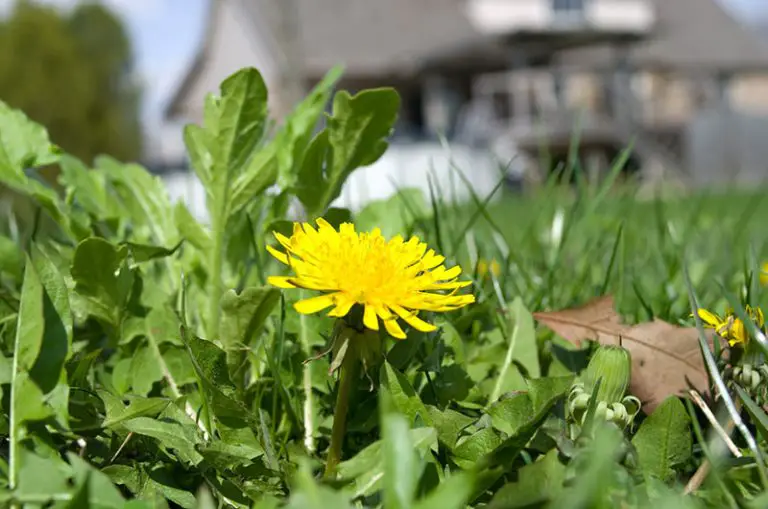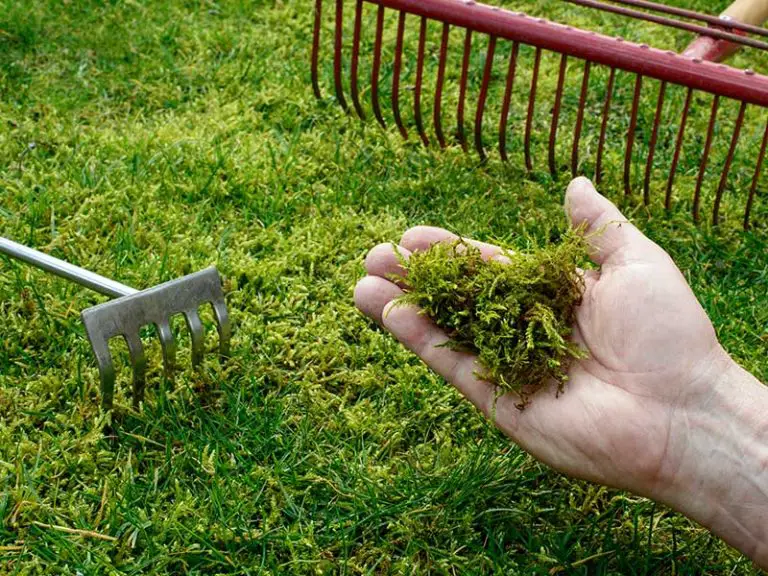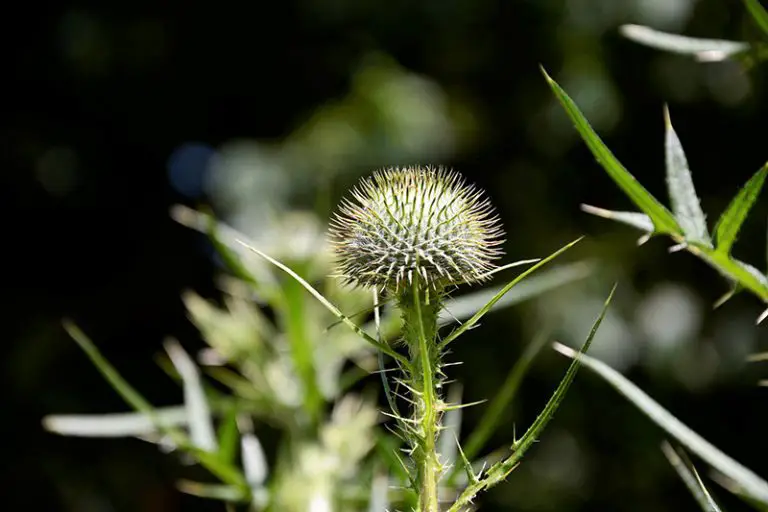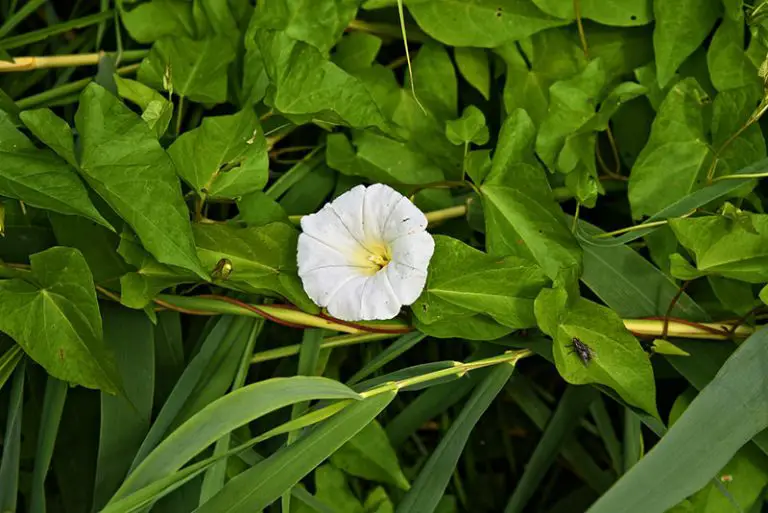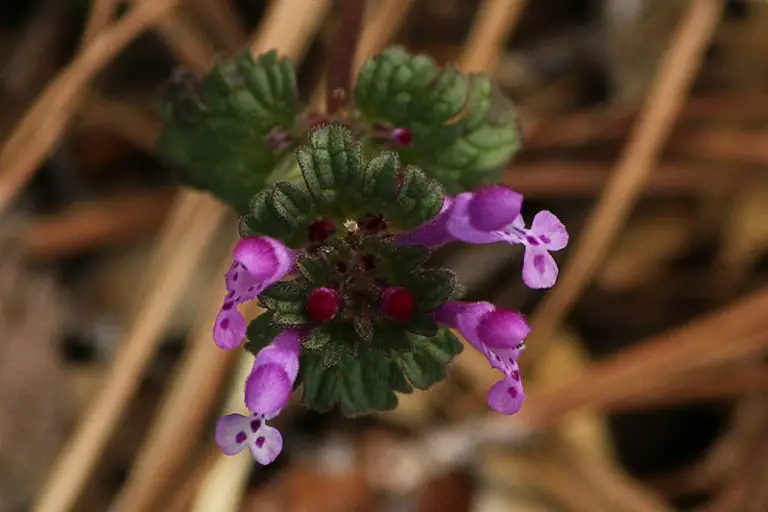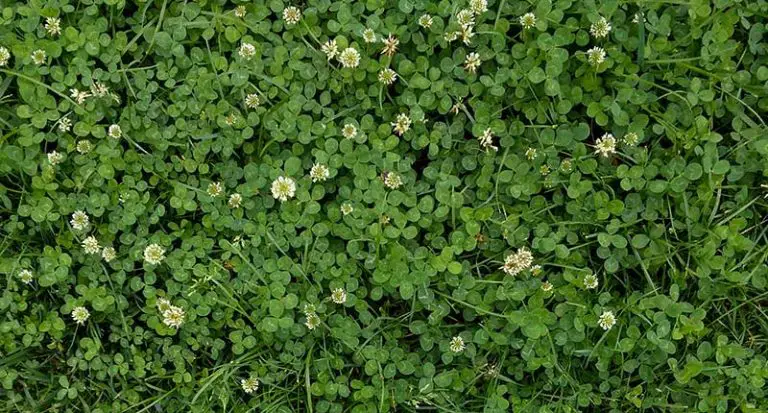How to Get Rid of Crabgrass
Are you frustrated because you’re seeing crabgrass popping up all over your lawn? If so, then you need to learn how to get rid of crabgrass before this nasty weed starts to take over and lay seeds down that cause damage next year, too.
There are several methods you can use to get rid of crabgrass, from the application of an inorganic chemical herbicide to the more organic method of using corn meal gluten to stifle the growth of this weed in your lawn. Read through this guide to learn how to get rid of crabgrass either by preventing it from appearing or by quickly eliminating it once any of its seeds start germinating within your turf.
What is Crabgrass?
Crabgrass is an annual grassy weed and its seeds are in your grass already. When soil reaches 55 to 60 degrees Fahrenheit for two to three days, it starts to germinate and grow. This plant is a Digitaria species. Although it traditionally shows up in warmer climates, it has found its way into cooler regions over the years.
Crabgrass doesn’t limit itself to lawns. You’ll see it pop up around your planters and in sidewalk or driveway cracks.
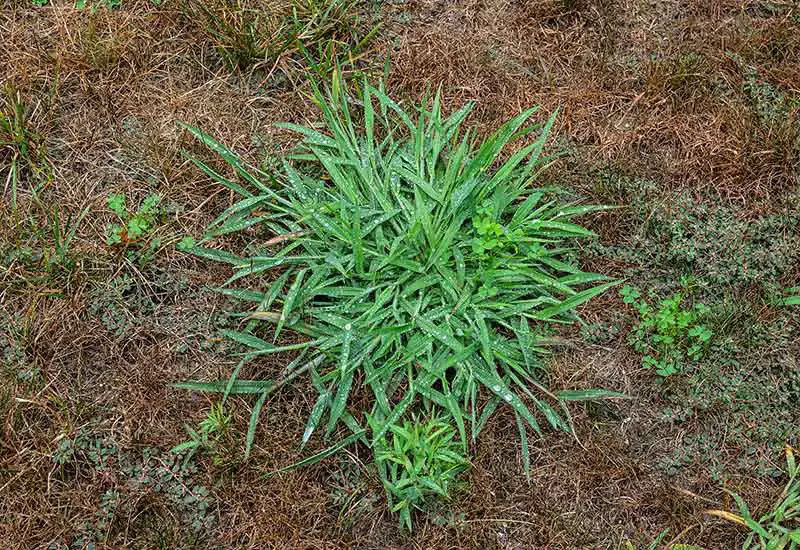
Why Crabgrass Grows
Since hundreds of thousands of crabgrass seeds already exist in your lawn’s turf, you need to actively work on preventing it from growing.
In most regions, crabgrass starts germinating in May or June. You’ll typically see it appear on your lawn during July and August. If you have a thinner lawn, then you’ll see more crabgrass than you will in a lawn sporting thick, lush turf.
Over time, crabgrass plants sprout seeds. Once those seeds mature, they drop into the lawn and you now have even more crabgrass in your yard. These seeds can stay in the soil for decades.
The plants usually die during the first frost and can leave holes in the lawn. Once spring rolls around again, and soil temperatures rise above 55 degrees Fahrenheit, crabgrass begins its growing cycle once again.
How to Identify Crabgrass
It’s easy to mistake crabgrass for other grasses, especially if your turf contains patches of several species. Also, crabgrass is often confused with other types of grassy weeds like quackgrass. It’s important to identify crabgrass correctly because some products will work on crabgrass while others won’t.
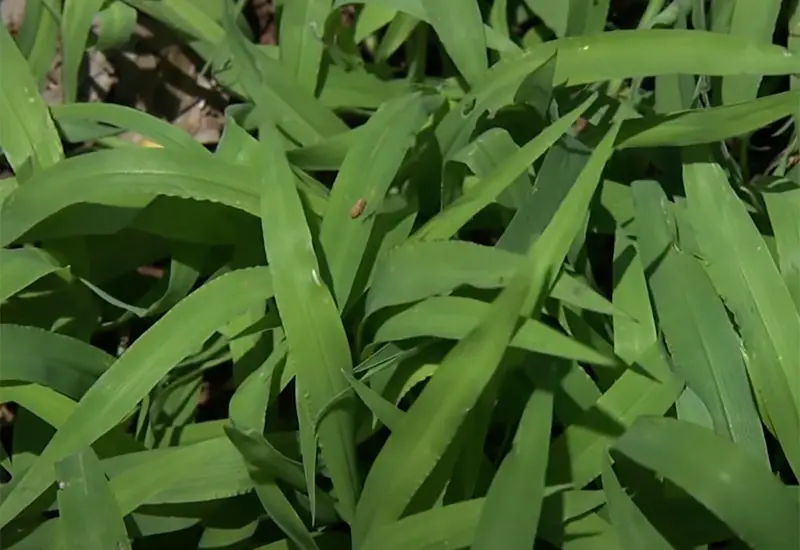
Identifying Crabgrass
Crabgrass is a grassy weed, so it looks just like grass. Its stems and grass blades grow in clusters. The stems grow outward. It’s so-called as it looks similar to a crab’s legs when viewed from above after the stems grow out.
When crabgrass sprouts, it will take on a light green color and darken as it matures. Some varieties take on a purplish color toward the base of the stem.
Inspect the Lawn
Now that you know what crabgrass looks like, you need to inspect your lawn to see where it’s growing. This will help you focus on your area of treatment. It also gives you some insight into why the weed is growing there in the first place.
Crabgrass grows in areas that receive plenty of sunlight. You won’t typically see it appear in shaded areas. It also grows best where little to no turf grass is growing. This weed doesn’t like competition so look at thinner areas of your lawn. That’s why it’s important to keep your grass turf healthy and thick.
How to Get Rid of Crabgrass
Always wear protective clothing when treating your lawn for crabgrass or other weeds. This includes:
- Long clothing
- Safety masks
- Chemical-resistant gloves
- Eyewear
Keep pets and people off the treated areas until dry.
Use a Post-Emergent Herbicide
A post-emergent herbicide is a weed killer designed to kill already-established weeds. One of the best herbicides you can use to kill the crabgrass in your lawn is Quinclorac 75 DF.
Quinclorac 75 DF is a selective post-emergent herbicide used to treat crabgrass and a variety of other weeds. It’s a dry flowable herbicide. This simply means it comes as a dry formulation that you mix with water and apply with a sprayer.
The fact that Quinclorac 75 DF is a selective herbicide means you can spray it on certain turf types without harming the turf. It targets the weeds while leaving the turf alone and keeping your lawn looking great.
Try Quinclorac 75 DF on Certain Turf Types
You need to understand which type of turf you have because the product works for specific types. It’s labeled for use on many cool-season grasses, such as:
- Annual Bluegrass
- Perennial Ryegrass
- Annual Ryegrass
- Kentucky Bluegrass
- Buffalograss
- Zoysiagrass
- Tall Fescue
You can also use it on Creeping Bentgrass, Hard Fescue, Red Fescue, Fine Fescue, and Rough Bluegrass.
Warm-season grasses like St. Augustine, Centipede, Bahiagrass, Seaside Bentgrass, and Dichondra are susceptible and less tolerant to Quinclorac applications. It’s possible to damage or kill these grasses using this particular product so it’s not recommended to use it on these grass types.
How to Apply Quinclorac 75 DF Correctly
Don’t mow the grass two days before or after applying Quinclorac. This helps make the application more effective and will prevent damaging the grass.
For spot applications, use the labeled rate of 0.367 oz of the product in one gallon of water. This solution will treat up to 1,000 square feet of your lawn. Start by adding half the water to your pump sprayer. Add the product next, close the sprayer, and shake it to agitate. Open the sprayer again to add the remaining water. Close the spray and shake one more time.
You’re going to apply the solution to individual weeds rather than broadcast it over the entire lawn. Spray the weed so that it gets wet without getting it to the point of run-off. Choose a calm day when temperatures aren’t too high, and winds are low to minimize drift.
You should see the results of your efforts within one to two weeks.
Use AgraLawn Crabgrass Killer on St. Augustine or Centipede Lawns
If you have a centipede or St. Augustine lawn, then you can try using AgraLawn Crabgrass Killer as your post-emergent solution. It’s labeled as having safe, natural ingredients such as:
- Baking soda
- Corn flour
- Cumin
- Wheat flour
- Cinnamon bark
You need to apply it on moist grass. Time your application correctly regarding watering. Don’t use irrigation or allow rain to hit the grass for three to five days after applying it. In hotter months, AgraLawn Crabgrass Killer could cause discoloration issues. However, this doesn’t cause any long-term harm to your grass and is only temporary. If you do suspect that your St. Augustine lawn has taken some damage, see our article How to Bring Back Dead St. Augustine Grass.
Another Option for Warm Season Grasses
If you don’t want to use a product like AgraLawn, then the next best way to get rid of crabgrass with warm-season grass is to simply pull up the weed.
Use a small garden trowel or a spade. Dig around the weed to find its roots. Crabgrass has fibrous roots that are white and very shallow. Loosen the soil around the weed and dig it out after you’ve located the roots.
Make sure you dig out the entire root system. If roots remain in the soil, then the crabgrass will grow back.
Over-the-Counter Methods Might Not Always Work
As you learn how to get rid of crabgrass, it’s important to note that over-the-counter products like Quinclorac or AgraLawn might not work well.
If you waited too long to where the crabgrass is quite mature, then you may need a professional product. Drive is one such product to look into.
You can’t buy it in Hawaii, and states like New York or Connecticut only allow it for commercial applicators. However, if you can access it and use it, then it might end up being what you need.
Keep in mind that even as crabgrass dies off after applying Drive, it won’t disintegrate entirely until after the next winter season. You’ll likely see dark, dead orange spots until after winter ends. However, it will prevent crabgrass from germinating and dropping more seeds into your lawn.
How to Get Rid of Crabgrass: A More Natural Approach
Did you know that you can use baking soda to kill crabgrass? Try this method first if you’re averse to using harsher products.
Water down the affected areas using a sprinkler system or hose. Apply a light dusting of baking soda to the crabgrass plant and the area surrounding it. Use a garden trowel or shovel to remove the crabgrass after it dies away.
You may see bare spots on the lawn afterward. You should overseed these areas before new weeds have the chance to grow in.
Prevention is the Best Method
Preventing crabgrass from growing in the first place will make it much easier to control as the season goes on.
To prevent crabgrass from growing in your lawn, you’ll want to use a pre-emergent herbicide.
Barricade represents one excellent pre-emergent herbicide to try. This is a granular pre-emergent designed to prevent crabgrass and other weeds from germinating in the first place. You can safely use it on both warm- and cool-season kinds of grasses.
Use Barricade before the soil reaches 55 to 60 degrees Fahrenheit. This means you want to apply this product type in late March or early April. You may get away with waiting until early May in some regions.
This product is a granular formulation. The granules are larger particles of product, usually a few millimeters wide. Unlike the Quinclorac, you’ll use a broadcaster to spread Barricade across the entire lawn.
Using Barricade
To apply Barricade, you’ll first want to measure the square footage of your lawn. Measure the length and width and then multiply those two numbers together. For instance, you have a 540 square foot lawn if the length is 36 feet and the width is 15 feet.
Most lawns aren’t perfect rectangles. This means you’ll need to measure various sections of lawn to come to the total square footage of the property.
Depending on your turf type, you’ll use Barricade at a rate of 1.5 to four pounds per 1000 square feet. Be sure to check the bag’s label to find the exact rates for your turf type. Here are a few examples from Barricade’s instructions:
- 1.5 lbs per 1000 square feet: Creeping Red Fescue and Creeping Bentgrass
- Two lbs per 1000 square feet: Perennial Ryegrass, Kentucky Bluegrass, and Buffalograss
- Four lbs per 1000 square feet: Centipede, Bermuda, Bahiagrass, Tall Fescue, St. Augustine, and Seashore Paspalum
How to Apply Barricade
You’re going to apply Barricade like a fertilizer because it’s a granular formulation. Measure out the amount of product you need for your lawn’s square footage. Load it into your fertilizer spreader.
Broadcast half your granules in parallel lines once across the area. Then, broadcast the other half at a perpendicular angle to cover the area in its entirety. It’s almost like creating a checkerboard.
Water the product into your lawn after it’s fully applied. You can achieve the most effective control with at least one-half inch of water within 14 days of application.
Watering is important to make sure Barricade does an effective job for you. The process pushes the granules deeper into the soil where the weed seeds exist.
Keep in mind that a pre-emergent might not work well with thin lawn areas because sunlight can degrade the pre-emergent, as well as foot traffic that’s causing the thin areas.
Use Corn Gluten as Your Pre-Emergent
You can try corn gluten as an alternative to products like Barricade. Corn gluten will stop roots from forming after seeds germinate. If you time the application correctly, then crabgrass seeds only form shoots. It eventually dies away because it never has the opportunity to form its roots.
Water corn gluten with at least one-quarter inch within five days of application for best results.
A Healthy Lawn Provides More Prevention Against Crabgrass
Along with pre-emergent herbicides, a good way to prevent crabgrass is to make sure that your turfgrass remains healthy enough to choke weeds out. Crabgrass doesn’t grow well when strong competition exists.
Here are five tips to help you promote a healthy lawn.
Don’t Water Every Single Day
Watering the lawn every day produces a weaker root system. Instead, consider watering once per week for one hour. This helps produce deeper roots that become more heat tolerant.
Take that advice with a grain of salt. It works better in regions with some rainfall. If you live in the high desert area of California, for example, you’ll end up with brown grass because it only rains a few days per year in January and February. Refer to our guide Best Time to Water Grass for more guidance on how often and how long you should water your lawn.
In tougher regions where it never rains during the summer months, test how long you can go without watering the yard. Get it right, and you’ll save on watering costs while promoting a far healthier lawn than those neighbors who turn the sprinklers on three times per day, seven days per week.
Don’t Cut the Lawn Too Low
Some people cut their lawns low. This isn’t the proper way to promote a healthy lawn. You should keep the blades at about two to three inches in length.
Raising your lawn mower’s blades to keep the grass blades longer provides shade from the sun. You’ll notice more yellowing after cutting the lawn too low.
Cutting your long down less than two inches also gives the crabgrass a chance to move back in.
Another big tip is to keep your mower blade very sharp. A dull blade starts ripping grass out of the ground instead of effectively snipping off the tops of the blades. See our article How to Sharpen Lawn Mower Blades to learn about when and how to sharpen the blades on your mower.
Leave the grass clippings on the grass because it acts as a natural fertilizer and mulch. If you choose to bag them, there are a number of ways that you can repurpose leftover grass clippings around the yard and home.
Aerate the Lawn at Least Once Annually
Aerating the lawn is essential when it comes to creating a healthy lawn that doesn’t need as much water. Aeration pulls up soil plugs out of the ground. This process benefits the yard by creating additional space for the air, roots, and water to work themselves into the soil.
Several benefits exist after you aerate your lawn:
- Roots grow deeper
- Reduces water dependency
- Produces a thicker turf that shoves away crabgrass
- Gives you a greener lawn
- Reduces runoff
Fertilize Your Lawn
Fertilize the lawn each year. Use a fertilizer with time-release nitrogen. Too much nitrogen all at once can make your lawn more susceptible to weed growth and may cause fertilizer burn on your grass. For a roughly 1000 square foot lawn, you don’t want to use more than three pounds of fertilizer annually. To find out what nutrients your lawn is lacking, test your soil first.
Re-Seed Damaged Lawn Areas
In the fall, re-seed those damaged areas of the lawn. You’ll often hear this process referred to as overseeding. The fall is a great time to do it because you have warm days and cool nights with some dew on the grass each morning. Overseeding a weedy lawn is a great method of natural weed control.
Conclusion
How do you feel now that you know how to get rid of crabgrass? It’s not a difficult process to keep crabgrass out of your yard. Remain diligent each spring with the pre-emergent process. If you happen to see the weed during July or August, then work to remove it as quickly as possible.

